Healthcare Resiliency – Lessons from the Front Lines, Part 1, featuring Will Shrank, Humana
- August 22, 2022
- Posted by:
- Categories:
Host Mark McClellan, MD, Ph.D., Professor of Business, Medicine, and Policy and founding Director of the Duke-Margolis Center for Health Policy at Duke University and LAN CEO Forum Co-chair, interviews Will Shrank, MD, Chief Medical Officer at Humana, and LAN Care Transformation Forum Co-chair. In this episode, Will shares how Humana is responding to the COVID-19 pandemic, eliminating barriers to telehealth, and how healthcare is evolving to address equity, access, and inclusion. This is part one of a three-part series featuring the LAN’s Executive Forum Co-chairs on lessons learned from the front lines of a public health emergency and how to apply these lessons to pave paths for health equity and payment reform.
Transcript
Hello and welcome to Spotlight on Action produced by the Healthcare Payment Learning and Action Network, commonly known as the LAN. I'm the host of today's session, Mark McClellan. I'm the Co-Chair of the LAN CEO Forum and the Director of the Duke Margolis Center for Health Policy. This Spotlight on Action Podcast series features LAN stakeholders discussing real-world actions and opportunities to transform the healthcare system while aligning with the LAN goals and initiatives related to alternative payment models, or APMs. Those key goals are: health equity, healthcare access, value-based healthcare, the best outcomes for everyone at the at the lowest possible cost. This has been the LAN's mission for some time, but it's been both challenging and fraught with some new opportunities in the context of the pandemic, which all of us, all healthcare systems are still struggling through to address. Today, in that context, I have the pleasure of speaking with the Co-Chair of the LAN’s Care Transformation Forum. That's where the LAN action happens. And he's also the chief medical officer at Humana, Dr. Will Shrank. In his role as Humana CEO, Will is at the forefront of transforming Humana's efforts to transform our healthcare system into one that's more agile, one that's more responsive to the needs of patients and is focused on these LAN goals of better outcomes, fewer barriers to care, better patient experience, and more equity, including through addressing steps like the social barriers to access, to needed care. So not a small task, but one that Humana, with Will's leadership, is very committed to being a leader on, and it fits in with the broad array of perspectives that we seek to bring together in the LAN. So we've got a lot to talk about today, given Humana's role and activities and both advancing value-based care and responding to the pandemic. And Will, really pleased to be with you today for this discussion.
Will Shrank (:I appreciate the invitation, and it's always a treat to get a chance to talk to you.
Mark McClellan (:Well, thank you. And I want to talk about several broad topics today kind of bearing in on the work that you've done and leading Humana's transition to value-based payments that's intersected with your, having to step up for the response to the pandemic where we really needed some innovative models of, of healthcare to deal with COVID to deal with the shift to home-based care, to deal with a new behavioral health, a mental health stresses that have arisen and to deal with them, all of those social barriers and challenges to getting to equity in healthcare that have come up and actually been exacerbated in the context of the pandemic. You know, the LAN's been working on this for, for a while now a year ago over a year ago. Now the LAN launched the Healthcare Resiliency Framework in response to COVID-19 and in response to their LANs efforts to make sure that APM reforms, other value-based care reforms, stayed as relevant and impactful as possible. And that framework includes both some short-term actions, some long-term steps to build resiliency in our healthcare system. As part of that, Humana stepped up and made a set of shared commitments as part of the overall LAN process, working together on these resiliency challenges and some individual company commitments to move forward despite or to respond to the challenges of the pandemic. Can you talk a little bit about some of the actions that, that Humana took in the short-term during the public health emergency to, to help create that, to help create that resilience?
Will Shrank (:Yeah, well, I mean, I think first of all, I'd say that we did a lot at Humana, but I've been so, so, so impressed and proud to see how the insurance industry general and the healthcare sector in general partnered so deeply and selflessly throughout the course of this pandemic to figure out how, together, we can meet the needs, the very, very personal needs of our members. It was very, very clear to us at the outset of the pandemic, as we were reaching out to our members, as we generally do, to ask them about their chronic conditions and their healthcare concerns, just really clear that folks were having new problems, different kinds of challenges, day-to-day challenges that really emerged from their social context. And it, it, it, it forced us within, you know, in a relatively short amount of time to really transform the way we collect information and [how] we provide outreach to our high-risk members from focusing on their conditions and managing their conditions to really understanding the uncertainty of the pandemic and how we can help them. And over the course of the pandemic, we conducted over 6 million screenings around health-related social needs, provided over a million meals, addressed issues, ranging from housing insecurity and, transportation issues to really, you know, core issues like social isolation and loneliness. At the same time, we partner deeply with providers in new ways and our value-based providers we offered considerable amounts of advances in terms of their quality bonuses and their, their and their surplus bonuses in order to keep them whole, for those that weren't capitated and more prepaid. And we reduced a whole host of administrative barriers to try to make sure that there were less concerns about capacity, whether it's access to subacute nursing facilities or, or the, like. We spent a lot of time figuring out how to get more care to the home, and whether it's providing screenings in the home, whether it's providing care in the home, that was a large priority. And we worked closely with CMS who gave us a great deal of latitude - through waivers. We eliminated all barriers to tele-health. We provided tele-health services, or we offer telehealth services, with no cost sharing to make sure that there was, there were - patients, our members, could get access to the care they need from the comfort of their own homes and the safety of their own homes. And in addition to things like not charging any copays for testing or for treatment of COVID. And then we, we really, really engaged around the time of the vaccine, and we continue to try to understand the very personal barriers that individuals face and to try to make sure that we're providing both education, transportation, engagement, information to encourage our members and particularly those that are in socially vulnerable areas to, to get vaccinated. It's been a very fulsome kind of a year and a half where we, we tried everything. We know that with a great deal of humility, we haven't done it all right. We've learned from our colleagues, we hope we've shared with our colleagues across the industry and across the sector. And we, we continue to be, you know, eager participants to try to manage this.
Mark McClellan (7:54):
Yeah. Still opportunities to keep learning. [I’m] struck by we, we probably won't be surprised to the audience that we've talked about, some of these topics before and I’m struck by some of those discussions and seeing some of the activities around at and around Humana and many of the diverse medical practices that you work with around the country. You found that some of the organizations, the healthcare organizations that were already going down this road of value-based care, moving away from fee-for-service had a somewhat easier time in some ways of of making these adaptations on the fly in this in this public health emergency. If I got that right, could you expand on that a little bit or explain it a bit more?
Will Shrank (8:37):
Yeah, that is right. And it's, it was actually in a lot of ways, really reassuring to see that our providers, particularly those that were prepaid there were who are responsible for the total cost of care of our members were unbelievably flexible and nimble in part, because they were less concerned about sort of their day-to-day revenue. They were, their revenue was, was was assured, so there was less sort of concern, you know, about their resilience, if you will. However, in, in producing the transfer, the clinical transformation that's necessary to be successful in total cost of care models, those providers were just much better positioned to deliver the care that our members, their patients, whether it was providing more continuous and frequent outreach to manage chronic conditions, whether it was flipping almost with incredible speed to the use of tele-health. And it was in addition, it was really focusing on those social and sort of personal challenges that their patients were experiencing. Those providers did, they, they were in a much better position to help. It's interesting that you would expect at a time where where fee-for-service providers were, would be trying to sort of supplement their revenue. We had, we, we offer telehealth at full charge. We would have expected that fee –for- service doctors would be much more rapidly adopting tele-health in order to substitute for the in-person visits, but that's not at all what we found. We found that value-based providers were much faster at adopting telehealth over the course of the pandemic, and it was sustained considerably longer than in in fee-for-service arrangements. And it just speaks to the fact that it's an orientation, it's a focus on the whole patient. And it's a, it's a, it's a clinical transformation model that allowed those providers to deliver a different level of care.
Mark McClellan (:So they'd already established some of the, the, the new connections, the different kinds of staffing and capabilities needed, started to build out those, those muscles already. You know, it's interesting, we did a report on a range of health care organizations last year during the pandemic at Duke Margolis on healthcare reform and COVID-19 resiliency and found something similar that you know. It's, it's, it's one thing to have a telehealth visit with a patient, it's another thing to make an effective home-based care model work, which definitely requires the connectivity, but also can be augmented by things like remote monitoring capabilities, nurses, or other members of a healthcare team who can help follow up with a patient and making sure their needs are being met at home, reliance on community health workers since as it sounds like you found during the pandemic a lot of the problems that people were facing, that were leading to serious medical consequences, everything from infections to emergency room visits, serious depression, et cetera, were related to things going on beyond healthcare. The, you mentioned transportation and isolation for example it sounds like that was your experience too.
Will Shrank (:Absolutely, absolutely. This was this is one of these unique perturbations that forces forced forces us to take a step back and really understand the drivers of health and the true, very personal barriers that patients, that members beneficiaries face. And I think we've learned a lot over the course of this year and a half about what it takes to keep people healthy. And you know, it's in these moments of uncertainty that, that we really accelerate our learning. I think we've, these are, these are the, the integration of the deeper integration of social care, the deep integration of behavioral health care, the need to better leverage care in the home and virtual care as a, as a sort of an integrated part of care delivery. And to do that all in a model where the provider takes meaningful responsibility and ownership for the health of the patient, the population of patients they serve, that is that, that is the model that has clearly been most effective at managing the course throughout the course of the pandemic. And that's the one that I think we're seeing CMS sort of lean in on, and I think we, as an industry are all going to lean in on.
Mark McClellan (:Yeah. So certainly seeing that, that leaning in I guess a challenge though for, is that most of the healthcare system heading into the pandemic, and I'd say even today, was not being paid on that basis. They're very much dependent on the fee-for-service revenues. And boy, you know, like you said, at the beginning, th-those, those physicians, nurses, hospitals skilled nursing long-term care facilities have really had to to step up and, you know, I guess the challenge, Will, that as you think about moving from the short-term response and what works in terms of flexibility and what especially worked in terms of the organizations that were already going down the value-based care road in a serious way, the challenge is how do you, how do you build on that? I mean, it's so many physicians, healthcare organizations that are just feeling burned out, overwhelmed with this with this latest surge in many parts of the country. And, and it felt like, well, you know, we can't build out these new capabilities. We're having trouble just, just getting by, you know, we appreciate the payment flexibility, but you get a sense that we can build on these steps in the short term to learn from them and make them take more widely and accelerate progress for the longer term, or is this just been a, a year of, of disruption and, and hopefully we can get back to reform later?
Will Shrank (:Well, I think, well, I, I, know I share your perspective here that this is not a blip, then we're going to go right back to where we were. I think that there is no way that we will ever look at care in the home and virtual care the same, that is now part of the conversation. And it's an expectation that that's a consistent offering, and we've got a lot, lot, lot more patients in particular seniors we've gotten comfortable with using technology and creating new kinds of relationships in terms of delivering care. The other thing that, you know, you, you spoke to as, as you in the introductory remarks about equity the pandemic has really shined a very bright light not just these important drivers of health, but really the, how different populations within the US experience care and experience health outcomes very differently. And that we will not walk back in terms of recognizing equity as a primary goal of the healthcare system. And as long as we do, and we start to really continue to, as we, as we foster and continue with the right measurement and the right incentives around promoting equity, that's going to be another really important motivator for providers to take a much more holistic view about how to manage the health of the patients that they serve. And as this is just another, I mean, I feel like there's, there's been sort of building momentum, building inevitab- inevitability, but this seems to be another big piece that's going to really help you know, create more more of a center of gravity for that momentum.
Mark McClellan (:e bit if that's okay. I mean,:Will Shrank (:Yeah. I'd say Humana, but I'm really the, you know, the industry in general as we, we leave the, so we got together as an industry the insurance industry to understand how we could partner better to address, to improve vaccination rates, but essentially to prophylax against the likelihood, which ended up happening, that there would be considerable disparities and uptake of the vaccine. Over the course of the pandemic, we had seen that you have disparate impacts on people of color. We wanted to be really thoughtful about understand, understanding sort of who's most socially vulnerable, providing additional resources upfront, to try to reduce the likelihood, to get pockets of the population that were under vaccinated and for whom there was, you know, much greater risk than other pockets where they were more vaccinated. So what we did is as a, as an industry, we work together to identify the 25% of communities with the highest social vulnerability index, the index generated by the CDC that characterizes it, it uses data about income and wealth in addition to ethnicity and race and transportation, other kinds of, sort of census level data to characterize, characterize vulnerability related to social conditions. And in those in those those quarter of communities, we provided a considerable amount of proactive outreach. We called members, we encourage them to use the vaccine to, to be vaccinated. We offered essentially almost uniformly across the health plans, offer transportation and other resources to try to facilitate. Many of us created partnerships with, with providers. We've created partnerships with Walmart and Walgreens to where they gave us the ability to, to actually schedule appointments in there. Walmart, in particular, gave us the ability to schedule appointments into their clinics so that we could really end to end once we got a member on the phone that wanted to get vaccinated, we could, we could schedule the appointment and provide the transportation and make sure that they did in fact, get that vaccination. And we focused those efforts in the most vulnerable neighborhoods. We started in vulnerable neighborhoods in Alabama and had really incredible positive feedback, and then spread that out to, to many, many states where we had relationships with retail pharmacies to try to foster the completion of those, those vaccinations. We worked with a variety of states, as you know, Mark, we we wish we could do more but work with states to try to understand what problems they're solving and to figure out how to target and deliver. Often, we brought in mobile units to actually deliver vaccinations. We set up vaccination clinics in partnership with local providers to try to really focus the, the delivery and the supply on where the need was greatest. And it was generally in places with lots of social, with more social vulnerability, you know, there there's, we're, we're, we're still in the midst of this pandemic. And there's still a lot of people who haven't been vaccinated. So clearly we're having this conversation with a lot of, it's not like we've got this solved. But we we have, we have really put together a pretty concerted effort to figure out how it can be part of this.
Mark McClellan (:I wanted to point out a couple of the important points said that you that you described there, one is the steps that health plans, including particularly Humana, where you've got that the most direct experience or taking, to take on some of these public health and equity issues in a more direct way. And just to add to that as you know, we've done a lot of work and including collaboration with the health plans and the states at the Duke Margolis Center, including some public-, some publications, again, available on our website about how states and health plans can work together. As you said, to identify these pockets of inequality in access, these areas that are or are, are, have been harder or hardly reached in terms of supports to get to better health and prevent complications and even some steps as you look forward to what I think 21st century public health can really look like partnerships between state immunization programs sharing public health data, and, you know, confidential and secure, and appropriate ways with, with health plans and their healthcare providers that are really trying to take on this focus on accountability for better outcomes and lower costs. And that leads me to the second point is there are a lot of things that you're doing, but, but back to our discussion about the role of payment reform and value-based care here, for your providers that are shifting away from fee-for-service, that gives them more opportunity as well, to, to, to reach out to those particular patients in need to to find a, whatever it, to help do, whatever it takes to to get those patients health risks addressed is that, are those programs synergistic as you've implemented?
Will Shrank (:Mark McClellan (:Yeah. And we're certainly not all the way there yet, but that kind of intentionality and alignment around population health goals, including health equity goals, including goals of getting vaccination rates up, especially in hardly-reached populations. Other steps to improve population health and avoid unnecessary costs is that kind of alignment between payers, providers, public health organizations. And I think the the pandemic has, has really highlighted in terms of, of where we need to go to both get out of the situation we're in now and prevent something like this from ever happening again. Will, we are about out of time has been actually. I was going to ask for like some final thoughts on, on before we leave, since you're so involved with the LAN efforts about moving forward from here, how do we build on the, the, this very special, very challenging, but very special moment we're in right now.
Will Shrank (:that through. Mark McClellan (:
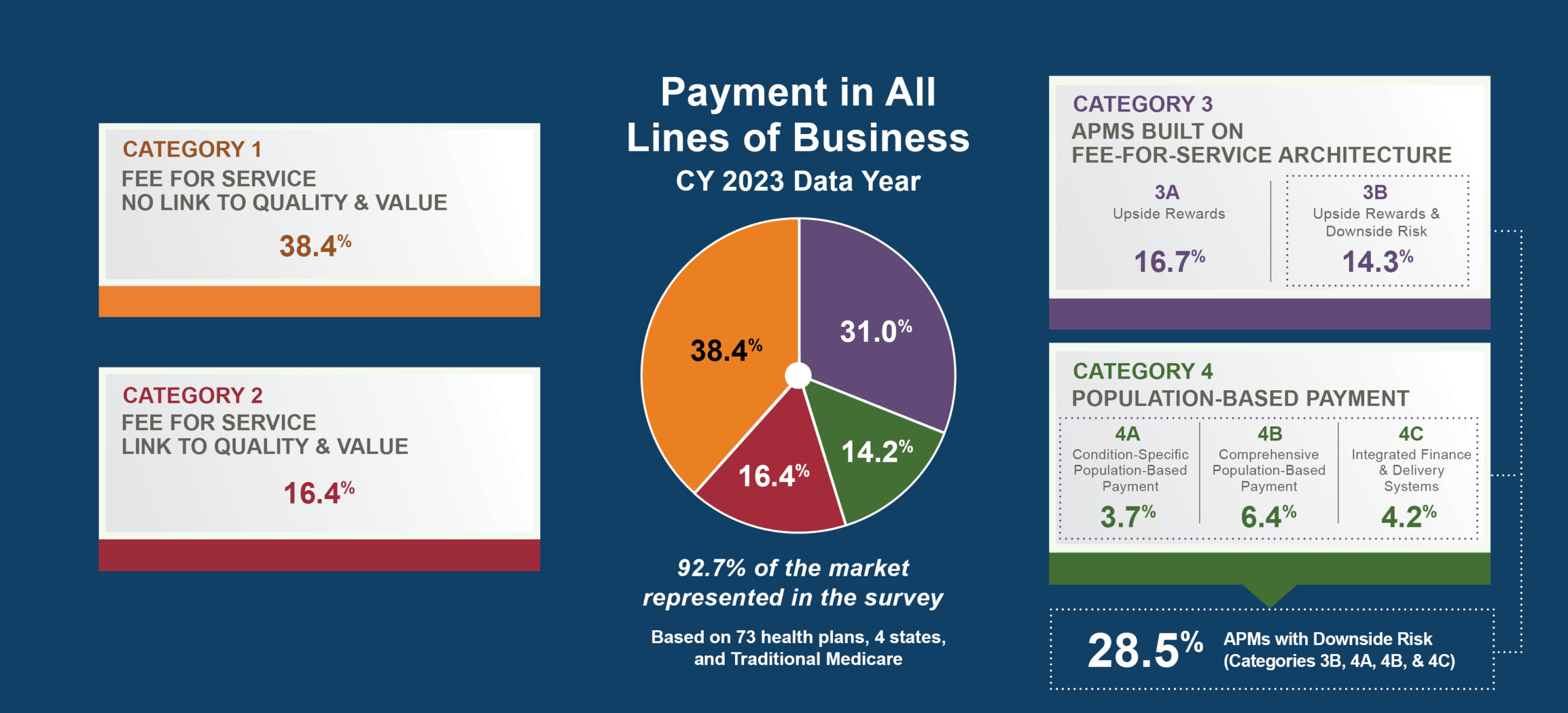
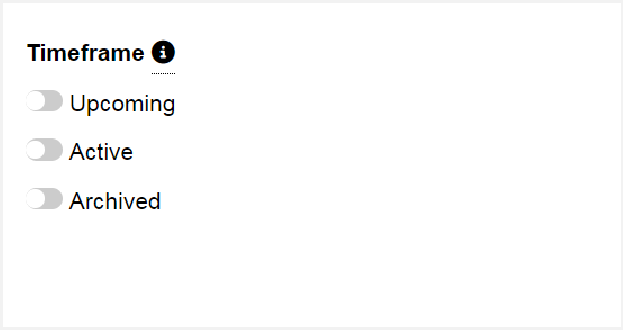
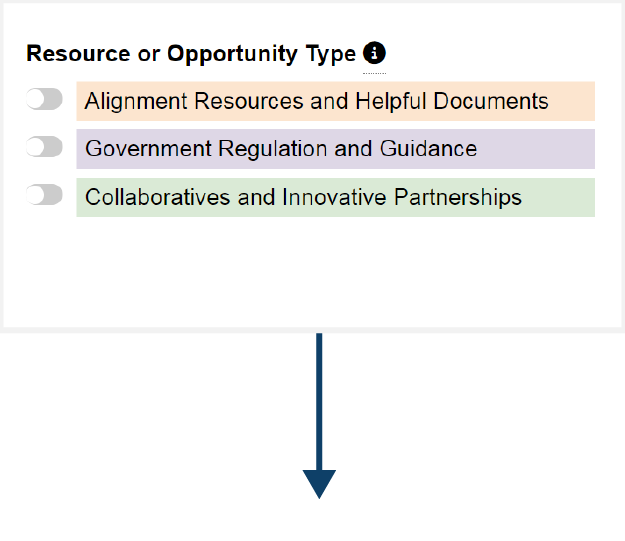
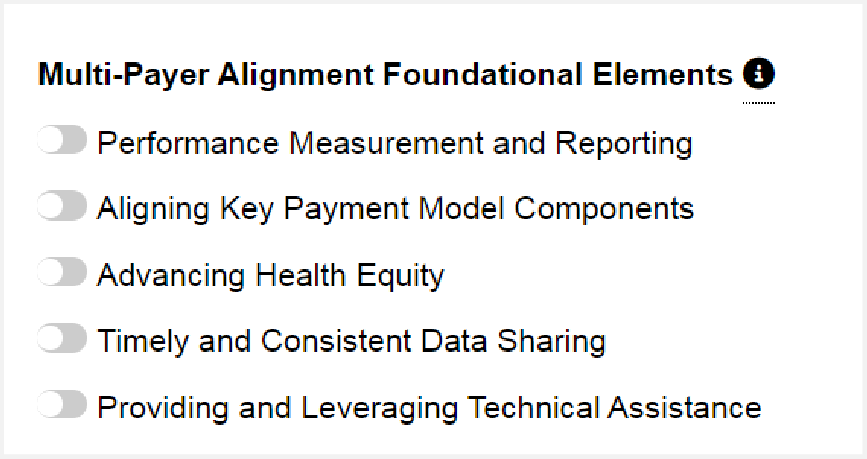




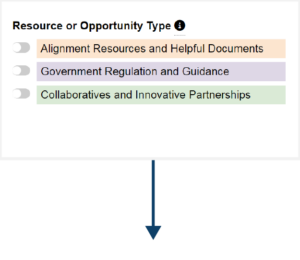

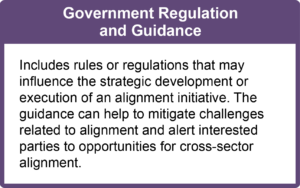
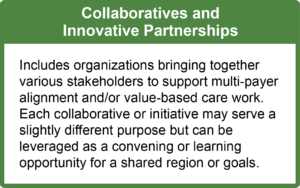
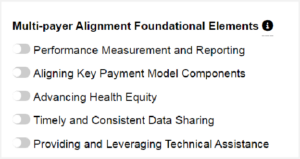




 Emily DuHamel Brower, M.B.A., is senior vice president of clinical integration and physician services for Trinity Health. Emphasizing clinical integration and payment model transformation, Ms. Brower provides strategic direction related to the evolving accountable healthcare environment with strong results. Her team is currently accountable for $10.4B of medical expense for 1.6M lives in Medicare Accountable Care Organizations (ACOs), Medicare Advantage, and Medicaid and Commercial Alternative Payment Models.
Emily DuHamel Brower, M.B.A., is senior vice president of clinical integration and physician services for Trinity Health. Emphasizing clinical integration and payment model transformation, Ms. Brower provides strategic direction related to the evolving accountable healthcare environment with strong results. Her team is currently accountable for $10.4B of medical expense for 1.6M lives in Medicare Accountable Care Organizations (ACOs), Medicare Advantage, and Medicaid and Commercial Alternative Payment Models. Mr. James Sinkoff is the Deputy Executive Officer and Chief Financial Officer for Sun River Health (formerly known as Hudson River HealthCare), and the Chief Executive Officer of Solutions 4 Community Health (S4CH); an MSO serving FQHCs and private physician practices.
Mr. James Sinkoff is the Deputy Executive Officer and Chief Financial Officer for Sun River Health (formerly known as Hudson River HealthCare), and the Chief Executive Officer of Solutions 4 Community Health (S4CH); an MSO serving FQHCs and private physician practices. Victor is the Chief Medical Officer for TennCare, Tennessee’s Medicaid Agency. At TennCare, Victor leads the medical office to ensure quality and effective delivery of medical, pharmacy, and dental services to its members. He also leads TennCare’s opioid epidemic strategy, social determinants of health, and practice transformation initiatives across the agency. Prior to joining TennCare, Victor worked at Evolent Health supporting value-based population health care delivery. In 2013, Victor served as a White House Fellow to the Secretary of Health and Human Services. Victor completed his Internal Medicine Residency at Emory University still practices clinically as an internist in the Veteran’s Affairs Health System.
Victor is the Chief Medical Officer for TennCare, Tennessee’s Medicaid Agency. At TennCare, Victor leads the medical office to ensure quality and effective delivery of medical, pharmacy, and dental services to its members. He also leads TennCare’s opioid epidemic strategy, social determinants of health, and practice transformation initiatives across the agency. Prior to joining TennCare, Victor worked at Evolent Health supporting value-based population health care delivery. In 2013, Victor served as a White House Fellow to the Secretary of Health and Human Services. Victor completed his Internal Medicine Residency at Emory University still practices clinically as an internist in the Veteran’s Affairs Health System. Dr. Brandon G. Wilson, DrPH, MHA (he, him, his) joined Community Catalyst as the Director of the Center for Consumer Engagement in Health Innovation, where he leads the Center in bringing the community’s experience to the forefront of health systems transformation and health reform efforts, in order to deliver better care, better value and better health for every community, particularly vulnerable and historically underserved populations. The Center works directly with community advocates around the country to increase the skills and power they have to establish an effective voice at all levels of the health care system. The Center collaborates with innovative health plans, hospitals and providers to incorporate communities and their lived experience into the design of systems of care. The Center also works with state and federal policymakers to spur change that makes the health system more responsive to communities. And it provides consulting services to health plans, provider groups and other health care organizations to help them create meaningful structures for engagement with their communities.
Dr. Brandon G. Wilson, DrPH, MHA (he, him, his) joined Community Catalyst as the Director of the Center for Consumer Engagement in Health Innovation, where he leads the Center in bringing the community’s experience to the forefront of health systems transformation and health reform efforts, in order to deliver better care, better value and better health for every community, particularly vulnerable and historically underserved populations. The Center works directly with community advocates around the country to increase the skills and power they have to establish an effective voice at all levels of the health care system. The Center collaborates with innovative health plans, hospitals and providers to incorporate communities and their lived experience into the design of systems of care. The Center also works with state and federal policymakers to spur change that makes the health system more responsive to communities. And it provides consulting services to health plans, provider groups and other health care organizations to help them create meaningful structures for engagement with their communities. Tamara Ward is the SVP of Insurance Business Operations at Oscar Health, where she leads the National Network Contracting Strategy and Market Expansion & Readiness. Prior to Oscar she served as VP of Managed Care & Network Operations at TriHealth in Southwest Ohio. With over 15 years of progressive health care experience, she has been instrumental driving collaborative payer provider strategies, improving insurance operations, and building high value networks through her various roles with UHC and other large provider health systems. Her breadth and depth of experience and interest-based approach has allowed her to have success solving some of the most complex issues our industry faces today. Tam is passionate about driving change for marginalized communities, developing Oscar’s Culturally Competent Care Program- reducing healthcare disparities and improving access for the underserved population. Tamara holds a B.A. from the University of Cincinnati’s and M.B.A from Miami University.
Tamara Ward is the SVP of Insurance Business Operations at Oscar Health, where she leads the National Network Contracting Strategy and Market Expansion & Readiness. Prior to Oscar she served as VP of Managed Care & Network Operations at TriHealth in Southwest Ohio. With over 15 years of progressive health care experience, she has been instrumental driving collaborative payer provider strategies, improving insurance operations, and building high value networks through her various roles with UHC and other large provider health systems. Her breadth and depth of experience and interest-based approach has allowed her to have success solving some of the most complex issues our industry faces today. Tam is passionate about driving change for marginalized communities, developing Oscar’s Culturally Competent Care Program- reducing healthcare disparities and improving access for the underserved population. Tamara holds a B.A. from the University of Cincinnati’s and M.B.A from Miami University.


 Dr. Peter Walsh joined the Colorado Department of Health Care Policy and Financing as the Chief Medical Officer on December 1, 2020. Prior to joining HCPF, Dr. Walsh served as a Hospital Field Representative/Surveyor at the Joint Commission, headquartered in Oakbrook Terrace, Illinois.
Dr. Peter Walsh joined the Colorado Department of Health Care Policy and Financing as the Chief Medical Officer on December 1, 2020. Prior to joining HCPF, Dr. Walsh served as a Hospital Field Representative/Surveyor at the Joint Commission, headquartered in Oakbrook Terrace, Illinois.








